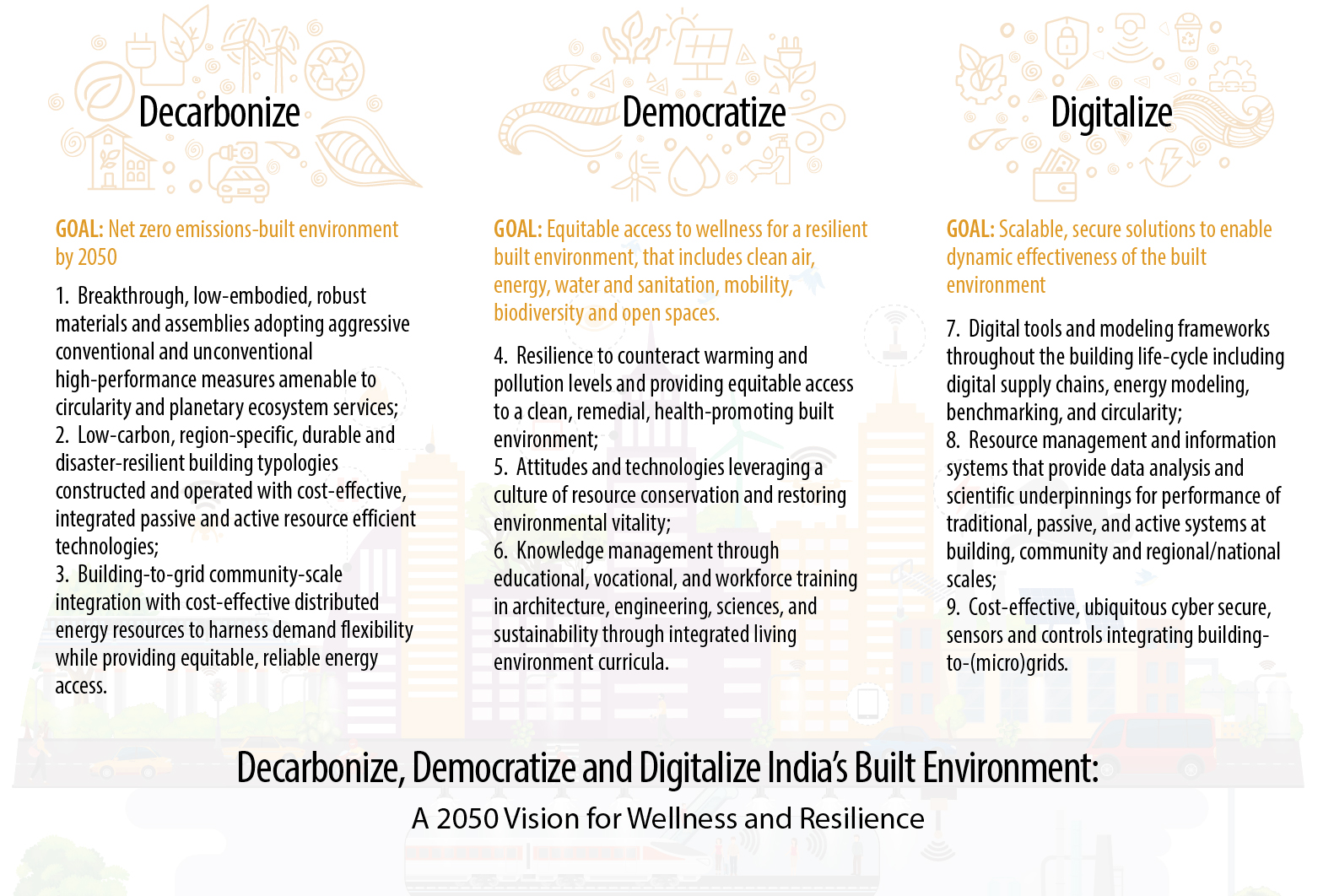Click on the poster below to open the full whitepaper.

The BIGathon+ roundtable and the ensuing whitepaper “Transforming India’s Built Environment” has its inception during the 2020 COVID-19 lockdown. We examined the opportunity that the lockdown offered, as a window of paused time for modern society to reconcile on the path to wellness and examine the severe parallax in the trajectory we were on. Modern communications and digital adoption provided the vital fabric to keep us together. From this fabric emerged humility, planetary solidarity and opportunity, with our resolve reaffirmed with the fresh air and clear view out of our windows.
Climate change is already a ravaging reality. The dual disruptions of frequent climate events and the killer pandemic have revealed how off-target and vulnerable we stand as modern society. Wellness is undeniably fundamental, emerging as a unifying theme that balances human development with environmental vitality and biodiversity revival. India, as also the rest of the world, is at a tipping point.
This white paper offers breakthrough pathways, that are generically inclusive of diverse stakeholders, and through well intended stakeholder inclusion provide meaningful takeaways for radical transformation towards achieving equitable wellness and planetary resilience by 2050.
We earnestly hope that this Whitepaper aids in furthering multi-stakeholder public-private collaborations and Indo-U.S. partnerships that drive effective action to achieve the collective vision of transforming India’s built environment. To rise to this unprecedented challenge, India needs to elevate environmental and societal wellness to the first rank of every Indian’s priorities and a central organizing principle using five levers: Research and Development, Technology, Human Capital, Policy, Economic Investment and to achieve wellness for all.
White paper release Agenda
Executive summary of the white paper


